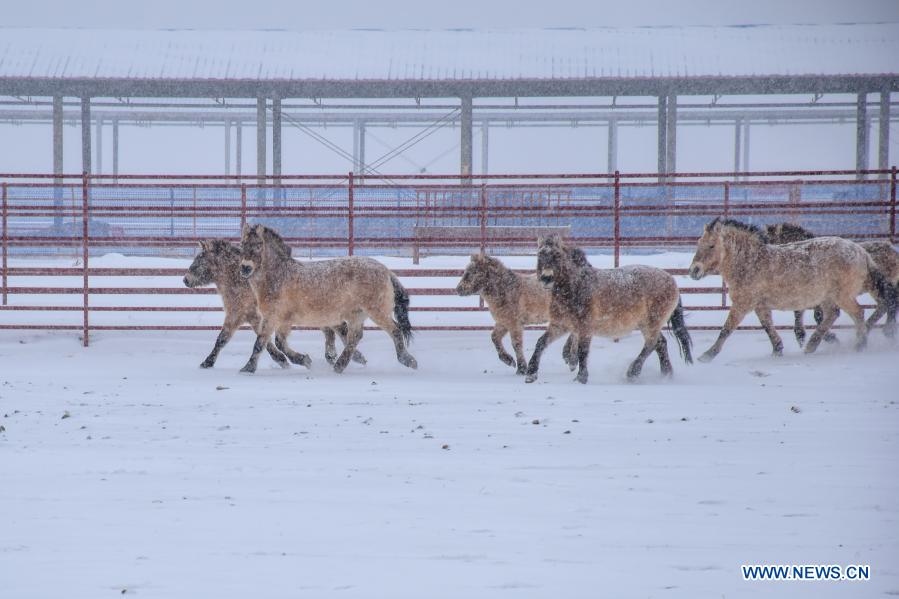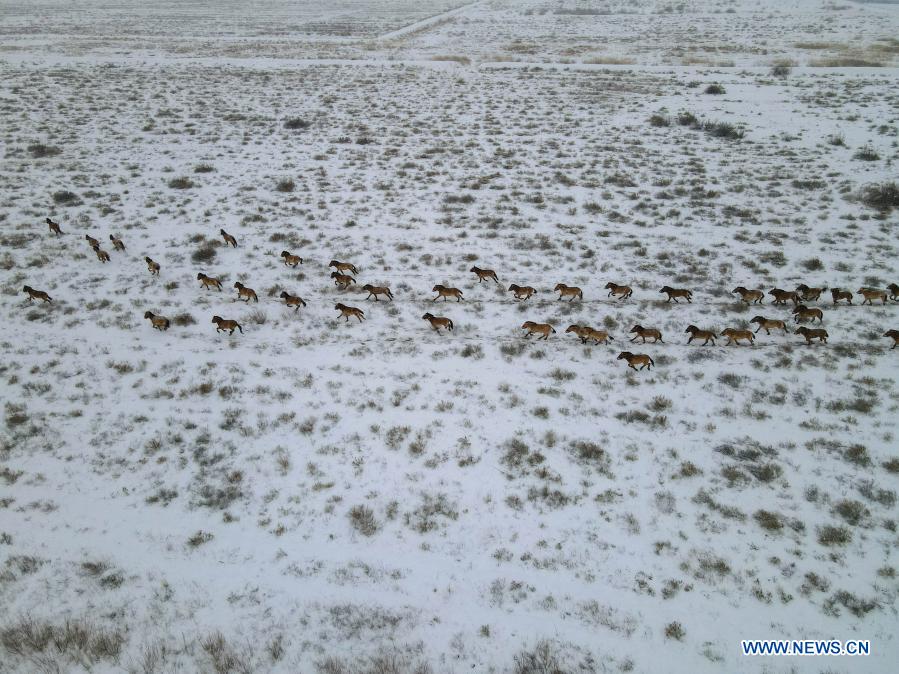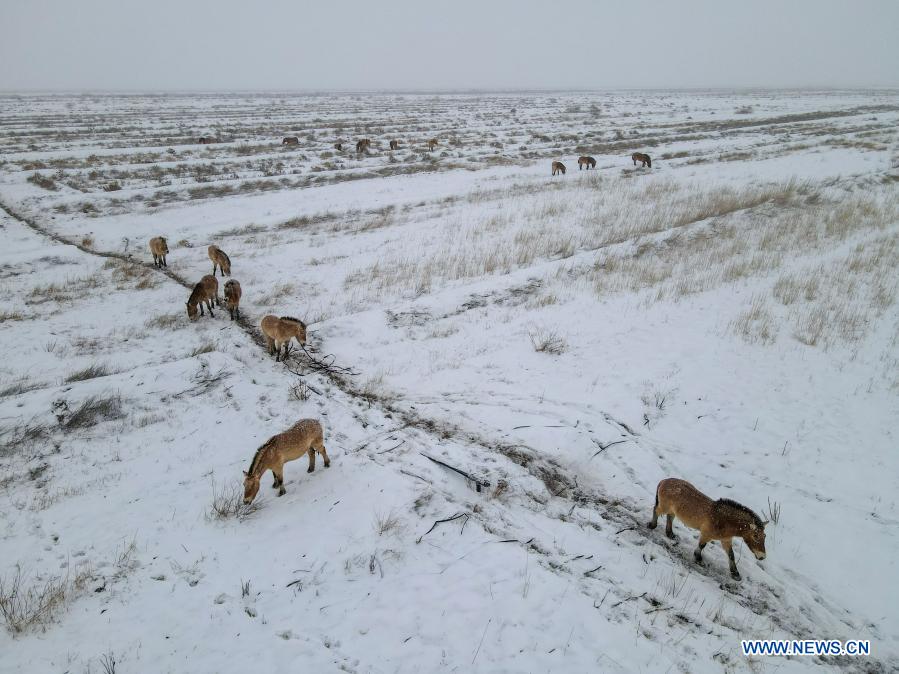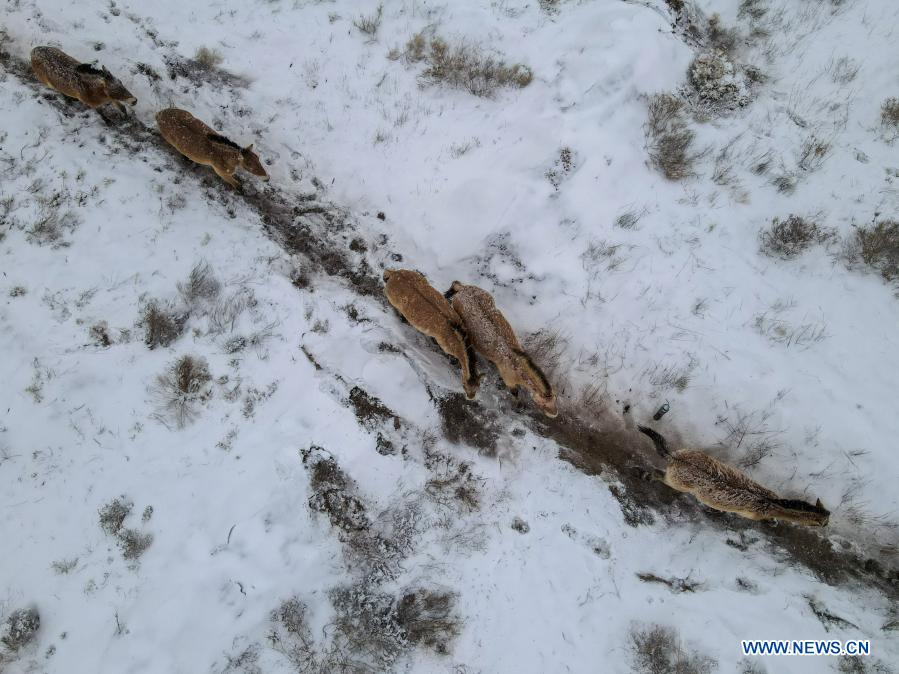
Przewalski's horses are seen in snow in the Xinjiang Wild Horse Breeding and Research Center in Jimsar County, northwest China's Xinjiang Uygur Autonomous Region, Jan. 23, 2021. The Przewalski's horse, named after its Russian discoverer, is an endangered species native to the desert grassland of Central Asia. Once extinct in China due to hunting and a deteriorating environment, the horses were reintroduced to the country in the 1980s from Europe and raised in Xinjiang and Gansu. The Xinjiang Wild Horse Breeding and Research Center is the world's largest wild horse breeding base. (Xinhua/Gao Han)

Przewalski's horses are seen in snow in this drone photo taken in Jimsar County, northwest China's Xinjiang Uygur Autonomous Region, Jan. 23, 2021. The Przewalski's horse, named after its Russian discoverer, is an endangered species native to the desert grassland of Central Asia. Once extinct in China due to hunting and a deteriorating environment, the horses were reintroduced to the country in the 1980s from Europe and raised in Xinjiang and Gansu. The Xinjiang Wild Horse Breeding and Research Center is the world's largest wild horse breeding base. (Xinhua/Gao Han)

Przewalski's horses are seen in snow in this drone photo taken in Jimsar County, northwest China's Xinjiang Uygur Autonomous Region, Jan. 23, 2021. The Przewalski's horse, named after its Russian discoverer, is an endangered species native to the desert grassland of Central Asia. Once extinct in China due to hunting and a deteriorating environment, the horses were reintroduced to the country in the 1980s from Europe and raised in Xinjiang and Gansu. The Xinjiang Wild Horse Breeding and Research Center is the world's largest wild horse breeding base. (Xinhua/Gao Han)

Przewalski's horses are seen in snow in this drone photo taken in Jimsar County, northwest China's Xinjiang Uygur Autonomous Region, Jan. 23, 2021. The Przewalski's horse, named after its Russian discoverer, is an endangered species native to the desert grassland of Central Asia. Once extinct in China due to hunting and a deteriorating environment, the horses were reintroduced to the country in the 1980s from Europe and raised in Xinjiang and Gansu. The Xinjiang Wild Horse Breeding and Research Center is the world's largest wild horse breeding base. (Xinhua/Gao Han)








